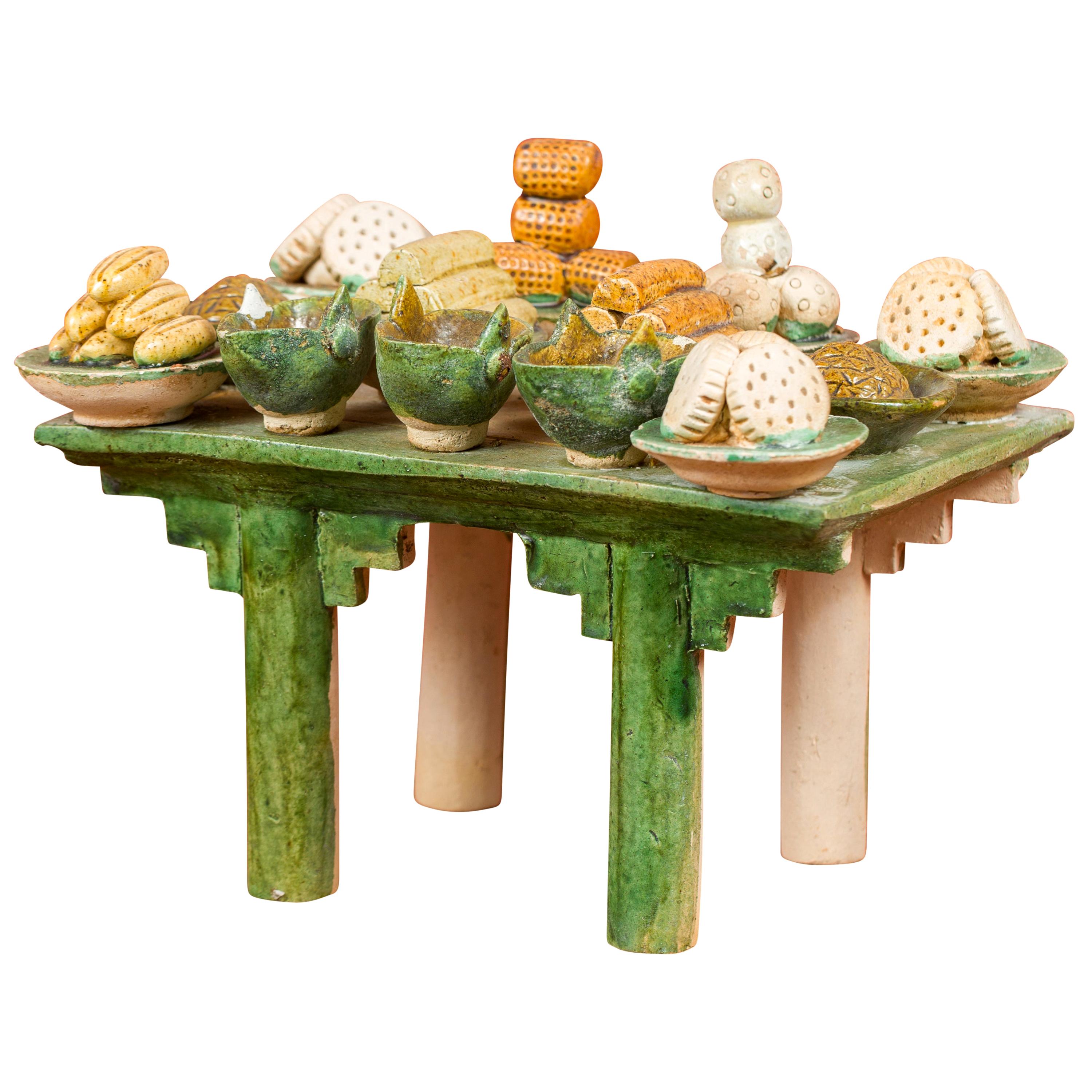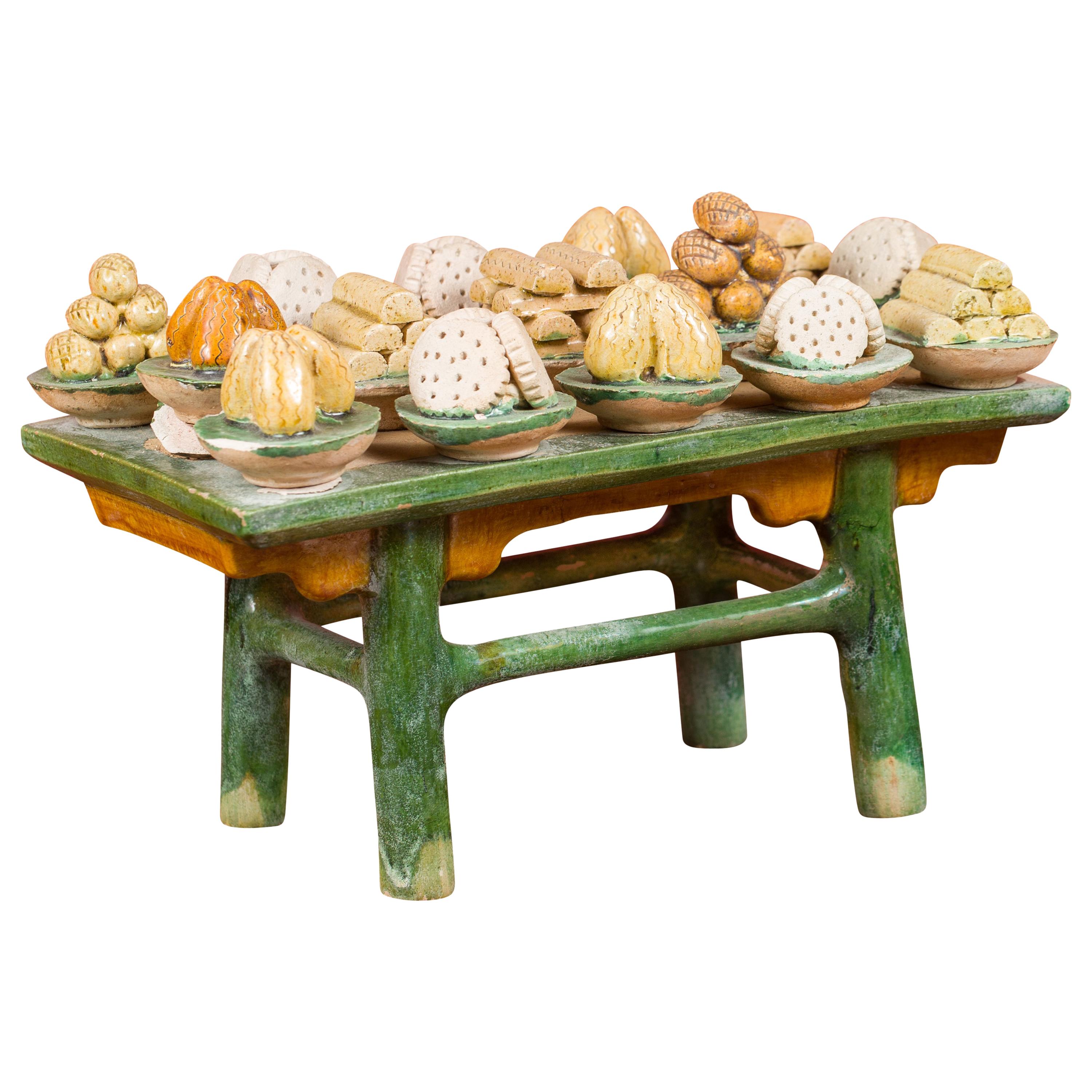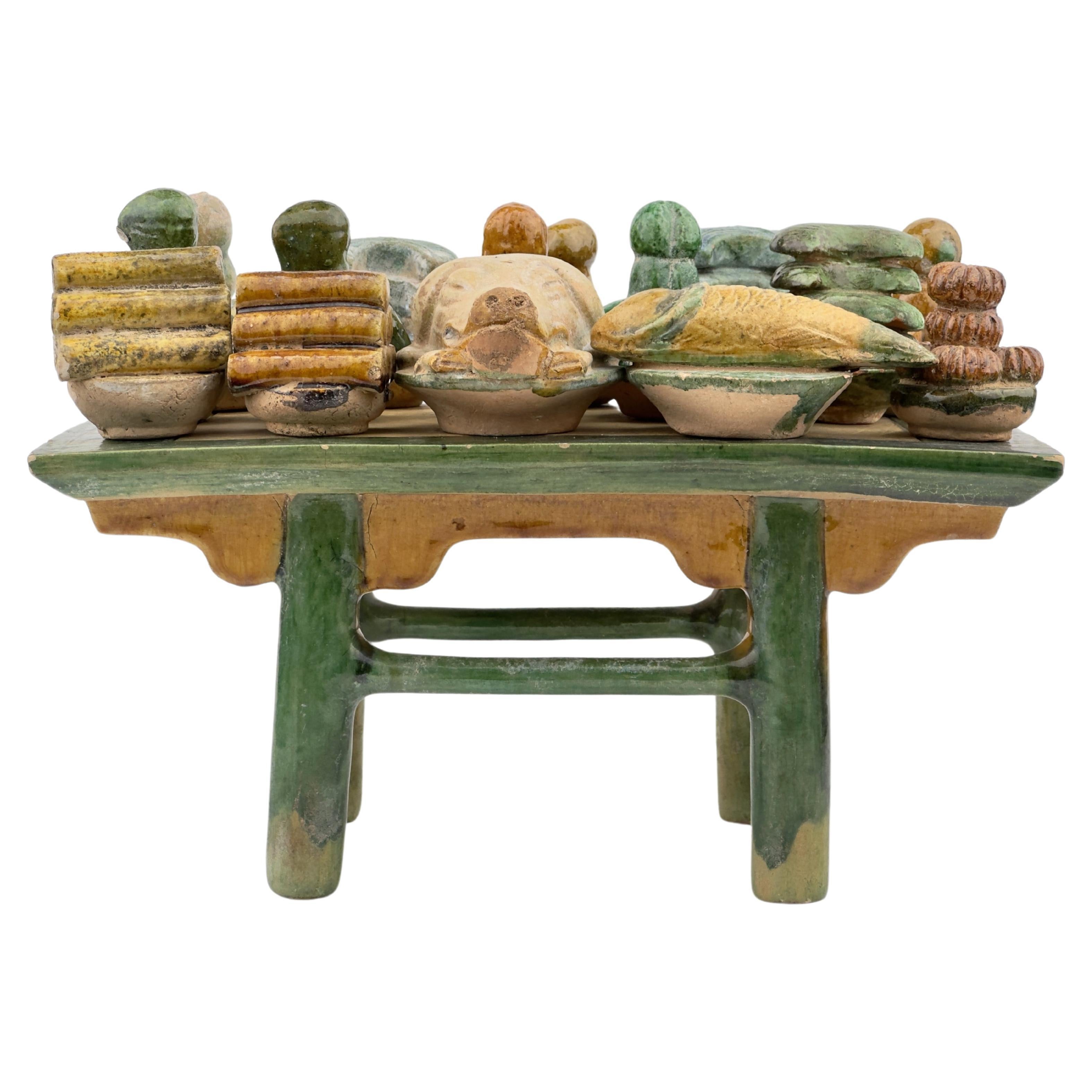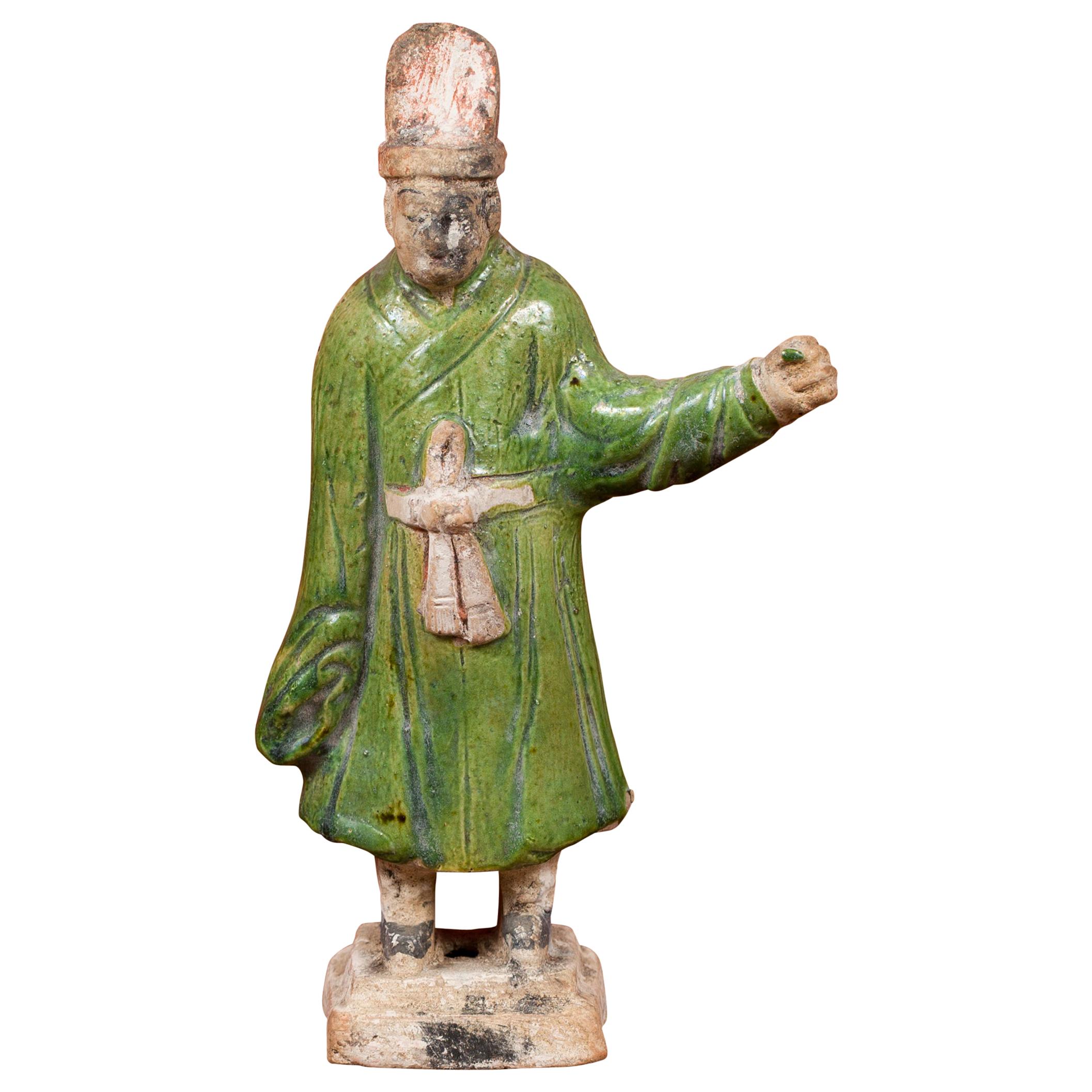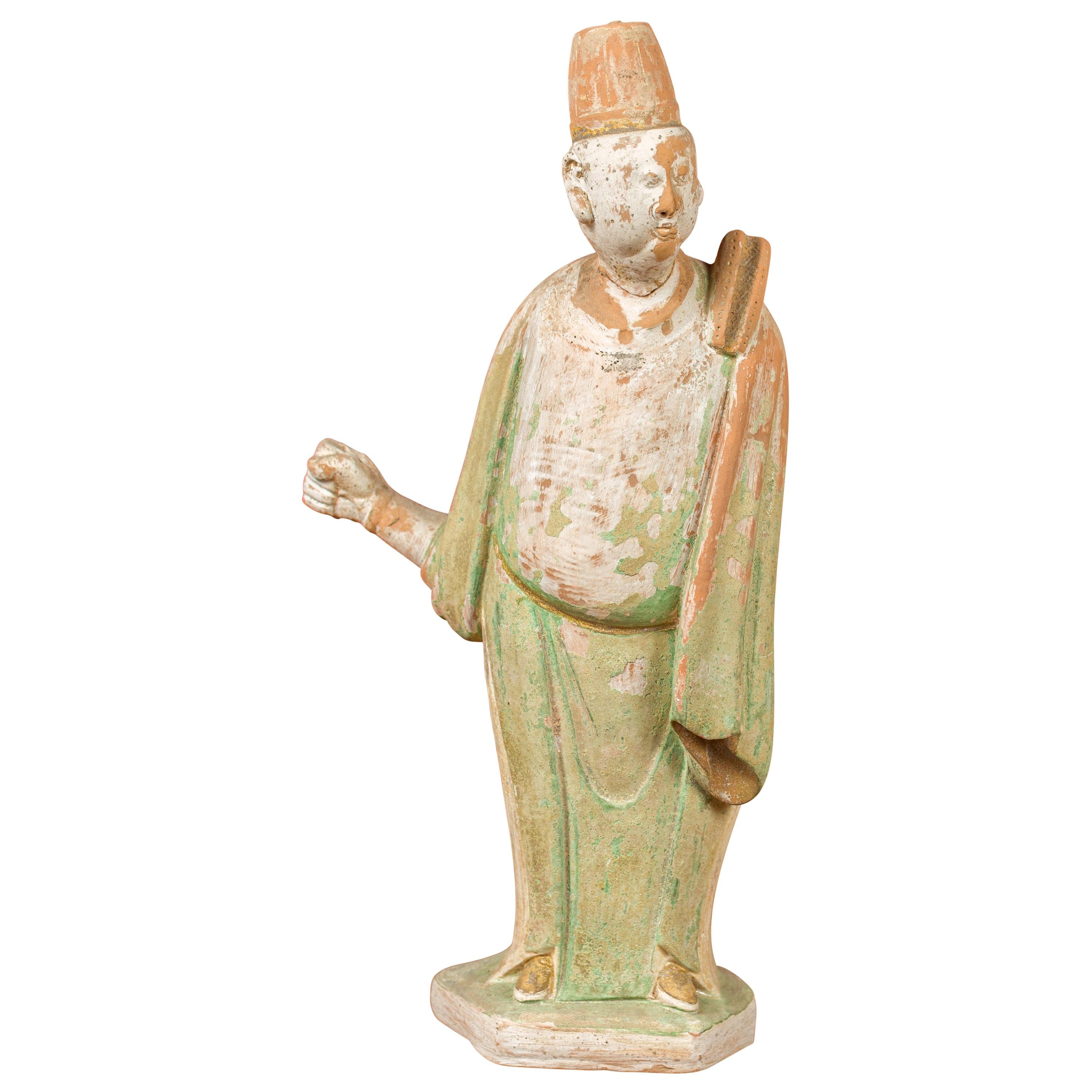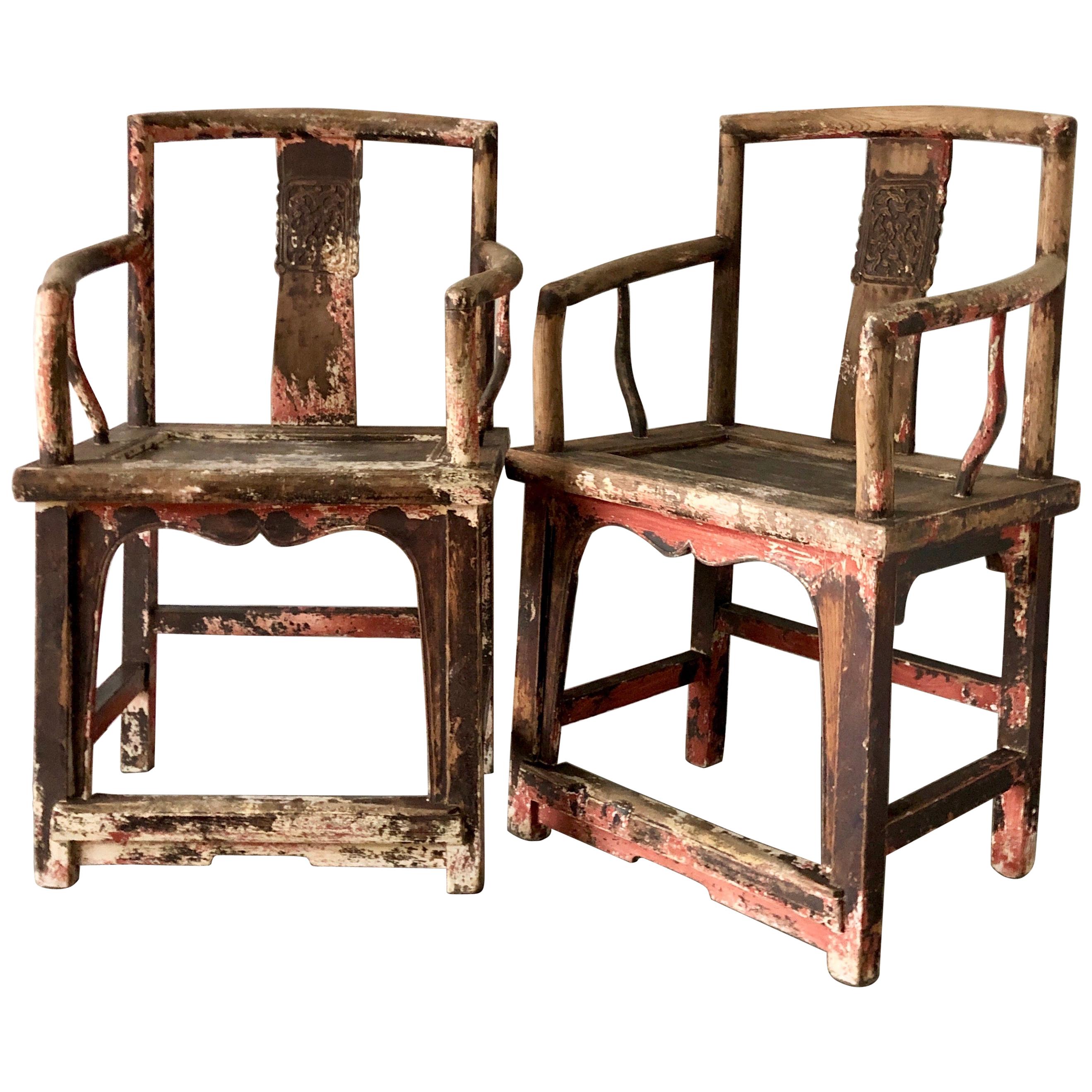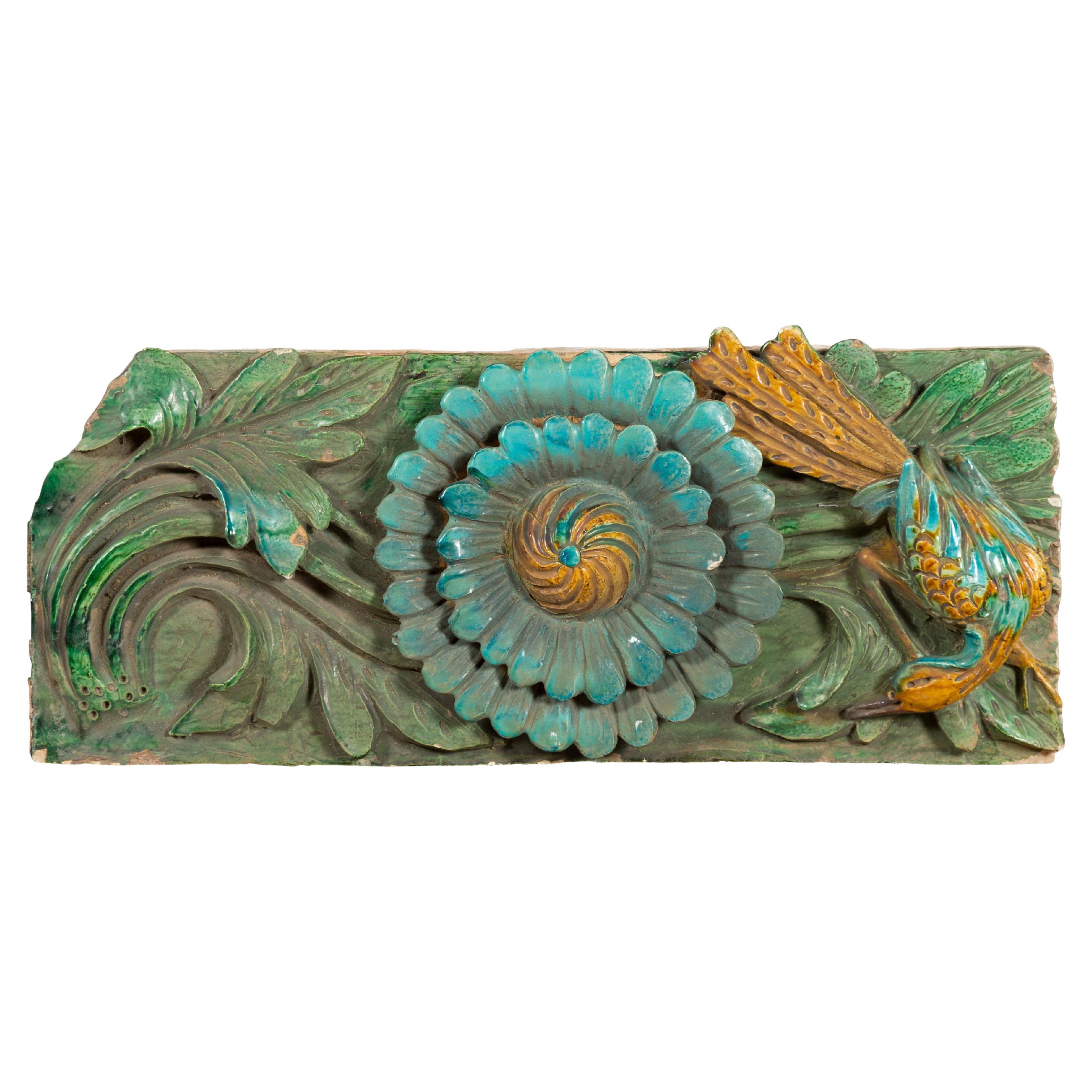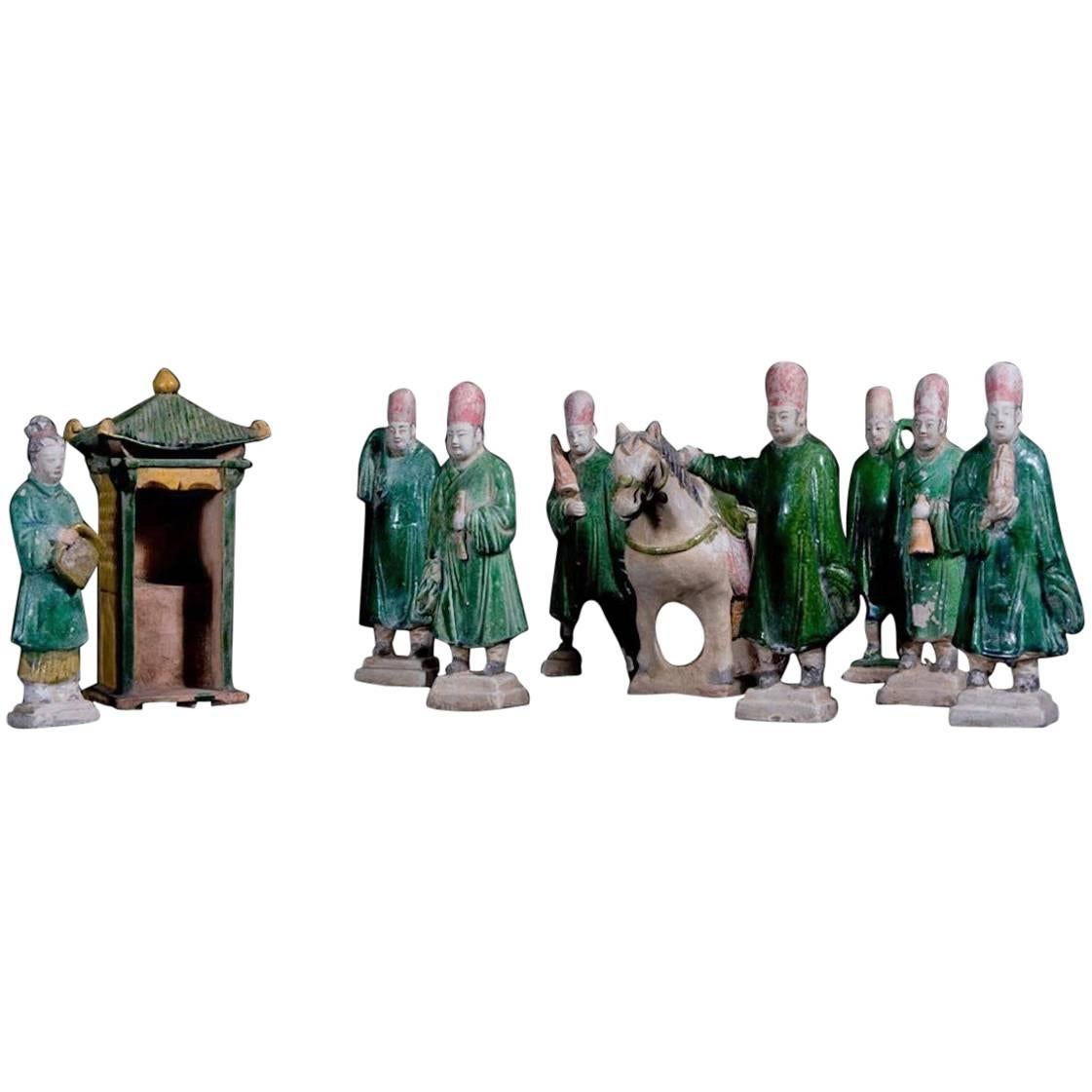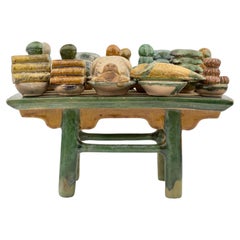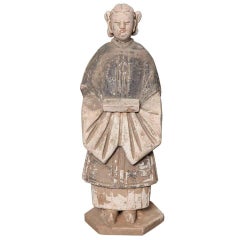
16th Century Ming Dynasty Terracotta Statuette of Woman Holding a Food Box
View Similar Items
Want more images or videos?
Request additional images or videos from the seller
1 of 10
16th Century Ming Dynasty Terracotta Statuette of Woman Holding a Food Box
About the Item
- Dimensions:Height: 12.5 in (31.75 cm)Width: 4.5 in (11.43 cm)Depth: 4 in (10.16 cm)
- Style:Ming (Of the Period)
- Materials and Techniques:
- Place of Origin:
- Period:
- Date of Manufacture:circa 1500
- Condition:Wear consistent with age and use.
- Seller Location:Yonkers, NY
- Reference Number:1stDibs: 1302208639294
About the Seller
5.0
Platinum Seller
These expertly vetted sellers are 1stDibs' most experienced sellers and are rated highest by our customers.
Established in 1968
1stDibs seller since 2009
915 sales on 1stDibs
More From This SellerView All
- Chinese Ming Dynasty 15th or 16th Century Glazed Terracotta Funeral Table MingqiLocated in Yonkers, NYA Chinese Ming dynasty period glazed terracotta funeral table mingqi from 15th-16th century with food and drinks. Created in China during the Ming Dynasty, this terracotta funeral table showcases a typical Chinese altar, painted in green with tempera and adorned with a lovely variety of modeled and painted miniature food and drinks such as cakes. Called Mingqi, these kinds of terracotta models were traditionally placed in Chinese burials...Category
Antique 16th Century Chinese Ming Antiquities
MaterialsTerracotta
- Ming Dynasty 15th or 16th Century Chinese Glazed Terracotta Funeral Table MingqiLocated in Yonkers, NYA Chinese Ming dynasty period glazed terracotta funeral table mingqi from 15th-16th century with food in dishes. Created in China during the Ming Dynasty, this terracotta funeral table showcases a typical Chinese altar, painted in green with tempera and adorned with a lovely variety of modeled and painted miniature foods such as cakes and breads. Called Mingqi, these kinds of terracotta models were traditionally placed in Chinese burials...Category
Antique 16th Century Chinese Ming Antiquities
MaterialsTerracotta
- Chinese Ming Dynasty Terracotta Official Statuette with Original PolychromyLocated in Yonkers, NYA petite Chinese Ming dynasty green glazed terracotta court official figurine from the 15th or 16th century, with original polychromy. Attracting our eye with its nice polychromy, th...Category
Antique 16th Century Chinese Ming Sculptures and Carvings
MaterialsTerracotta
- Chinese Ming Dynasty Terracotta Courtsman Statuette with Original PolychromyLocated in Yonkers, NYA Chinese Ming Dynasty painted terracotta courtsman figure with original polychromy. Attracting our eye with its weathered appearance and subtle polychromy, this Ming statuette featu...Category
Antique 17th Century Chinese Ming Sculptures and Carvings
MaterialsTerracotta
- Chinese Ming Dynasty 17th Century Glazed Terracotta Sancai Temple Roof TileLocated in Yonkers, NYA Chinese Ming Dynasty period temple roof tile from the 17th century, with turquoise glaze, bird and flower motifs. Created in China during the Ming Dynasty which ruled from 1368 to ...Category
Antique 17th Century Chinese Ming Antiquities
MaterialsTerracotta
- Chinese Ming Dynasty Painted and Carved Statue of Guanyin, 15th or 16th CenturyLocated in Yonkers, NYA Ming dynasty period 15th or 16th century painted stone sculpture of the Bodhisattva of Compassion Guanyin in a seated position. Created in China during the Ming dynasty, this marble statue features Guanyin, the Bodhisattva of Compassion, depicted in a seated position, wearing a large Chinese monastic dress and a headscarf. Her clothes are accented with the red color that is characteristic of Guanyin representations. The drapery demonstrates the undeniable mastery of the Chinese stone carving...Category
Antique 16th Century Chinese Ming Sculptures and Carvings
MaterialsStone
You May Also Like
- Green and Ochre Glazed Altar Table with Offerings, Ming Dynasty, 15~16th CenturyLocated in seoul, KRThe table bearing pig head, rice cakes, dishes of meat, fish and fruit. Known as Mingqi, these terracotta models were customarily included in Chinese burial practices, particularly among the affluent, to aid the deceased in their journey through the afterlife. This tradition extends back to the Neolithic Period. A unique terracotta funeral table...Category
Antique 15th Century and Earlier Chinese Ming Antiquities
MaterialsPottery
- Chinese Ming Dynasty Bronze Nanhai Guanyin, 16th/17th Century, ChinaLocated in Austin, TXA decidingly charming Chinese polychromed and gilt cast bronze figure of Nanhai Guanyin, Guanyin of the South Sea, Ming Dynasty, 16th/17th century, China. Guanyin, the bodhisattva of compassion, is portrayed here as a beatific figure seated upon a raised lotus pedestal over waves. Guanyin is dressed in heavy robes, and wears an elaborate headdress. The small figure of Amitabha Buddha in the headdress positively identifies this figure as Guanyin. Guanyin rests one hand in his lap, holding a cup of pure water said to be able to alleviate all suffering. His other hand is raised, holding a willow branch which is used to sprinkle the healing waters. The two lotus blossoms to either side of Guanyin would originally have supported figures of the acolytes...Category
Antique Early 1600s Chinese Ming Sculptures and Carvings
MaterialsBronze
- Chinese Ming Dynasty Glazed Tall Attendant Figure, 16th-17th Century, ChinaLocated in Austin, TXA tall Chinese green and amber glazed figure of an attendant, Ming Dynasty, 16th-17th century, China. The figure stands upon an integral plinth, dressed in long robes...Category
Antique 17th Century Chinese Ming Sculptures and Carvings
MaterialsPottery
- Pair of 19th Century Ming Dynasty Style ChairsLocated in Charleston, SCA pair of Chinese hardwood chairs in well worn patina, crafted in the Ming dynasty style, late 19th century. Perfect accent chairs of very fine...Category
Antique 19th Century Chinese Ming Armchairs
MaterialsWood, Paint
$2,800 / set - Pair Large Chinese Ming Dynasty Glazed and Painted Pottery Figures, 16th CenturyLocated in Austin, TXA striking pair of large Chinese glazed and painted pottery figures, Ming Dynasty (1368 to 1644), circa 16th century, China. The impressive and realistically modeled figures each portrayed standing upright upon a sancai (three color) glazed pedestal of kang table form. The man is dressed in a short black surcoat over a long robe and pants, a smart cap upon his head. His face is warm and welcoming, with wide eyes and a slight smile on his lips. He holds his hands out in front of him, palms up, almost as if shrugging, though presumably originally holding an object or offering, now lost. The woman of slightly smaller stature, and dressed in a longer surcoat over a long robe and skirt. She wears a fitted cap upon her head. Her hands also held out in front, grasping long lost objects. Her face is slightly more severe, with a somewhat pinched look, and slight frown upon her lips. The size of these figures is remarkable, as is the realism and attention to detail, almost as if they were modeled after real people, as opposed to the more common and generic Ming Dynasty pottery...Category
Antique 16th Century Chinese Ming Sculptures and Carvings
MaterialsPottery
- Impressive Terracotta Funerary Procession - Ming Dynasty, China '1368-1644 AD'Located in San Pedro Garza Garcia, Nuevo LeonImpressive Funeral Ensamble of 10 Terracotta Glazed Figures in green and caramel colors depicting a votive procession with a palanquin, his four carriers, a horse, a stableman, two musicians, and an offering carrier. This ensemble is accompanied by a Certificate of Authenticity, and Certificate of Expertise by Jean-Yves Nathan - Specialist in Asian Arts for the CEDEA (The European Confederation of Art Experts). Burial figurines of graceful dancers, mystical beasts, and everyday objects reveal both how people in early China approached death and how they lived. Since people viewed the afterlife as an extension of worldly life, these figurines, called mingqi, sometimes referred as “spirit utensils” or “vessels of ghosts” disclose details of routine existence and provide insights into belief systems over a thousand-year period. The Ming dynasty was the ruling dynasty of China – then known as the Empire of the Great Ming – for 276 years (1368–1644 AD). Founded by Chu Yuan-chang, the rebel leader that was successful in removing the mongols from the throne. Chinese control was re-asserted in China and eastern Asia. Literature became more important, schools were created, and the justice system was reformed. The Ming dynasty is described by some as "one of the greatest eras of orderly government and social stability in human history,” was the last imperial dynasty in China ruled by ethnic Han Chinese. The practice of burying ceramic objects with the deceased went into decline from the 10th to the 14th Century AD. There was a revival in placing miniature representations of glazed terracotta objects such a furniture, food offerings, horses, miniature statues...Category
Antique 15th Century and Earlier Chinese Ming Antiquities
MaterialsTerracotta
Recently Viewed
View AllMore Ways To Browse
Sterling Silver Shibayama
Chinese Tomb Art
French Wood Console Wood
French Mid Century Modern Wall Sconce
Brass Silver Light
Daybed Modern
Sterling Silver Footed
Vine Light
Translucent Pendant
Extra Chairs
Italian Home Accessories
Glass Chandelier Wide
Old Iranian Rugs
Floral Finial
Metal Flush Mount Fixture
Hand Turn Vase
Vintage Mid Century Modern Wood Dining Chairs
Dining Table Glass With Chairs
